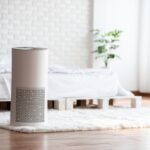
Hearing aid technology has improved substantially over the last few decades. At their core, all hearing aid devices are designed the same way with four basic components: a microphone, a receiver, a processor, and a power source.
The microphone is the part that’s responsible for picking up sounds in the environment and passing them on to the processor. The processor then enhances the signals it receives and sends them to the receiver. The receiver delivers the enhanced signals to the ear canals. The battery, or the power source, drives this whole system.
Although the core functionality remains the same, hearing aids can be considered either basic or advanced based on the sophistication of features it offers. Listed below are some of the more advanced features that may start becoming common in hearing aid devices going forward.
Superior Sound Processing and Frequency Response
All hearing aid devices process sound. But the more advanced the hearing aid, the more flexibility it will have to process sound in a way that suits each wearer’s unique hearing needs. For instance, if a person has high-frequency hearing loss, a sophisticated hearing aid will only amplify those particular sound frequencies. Whereas a low-end hearing aid may amplify mid and high-frequencies, causing distortion.
Artificial Intelligence
With intelligent hearing aids, wearers will be able to set their program and volume preferences for different environments. The hearing aids will then begin to change their sound processing automatically when a certain environment is detected. Essentially, these hearing aids will mimic the body’s natural process of hearing sounds if the wearer’s hearing wasn’t impaired.
App Support
Almost all advanced hearing aids today have their own smartphone apps that allow users to make adjustments, monitor the battery life of their device, contact their hearing aid provider, and more. Going forward, these apps may work like assistive listening devices by routing smartphone notifications directly to a wearer’s hearing aid, translating different languages automatically, and converting speech to text.
Waterproof Design
A number of hearing aids that are available today are water-resistant and not waterproof. However, more and more manufacturers are testing out waterproof designs that can stay submerged in water for a while.




